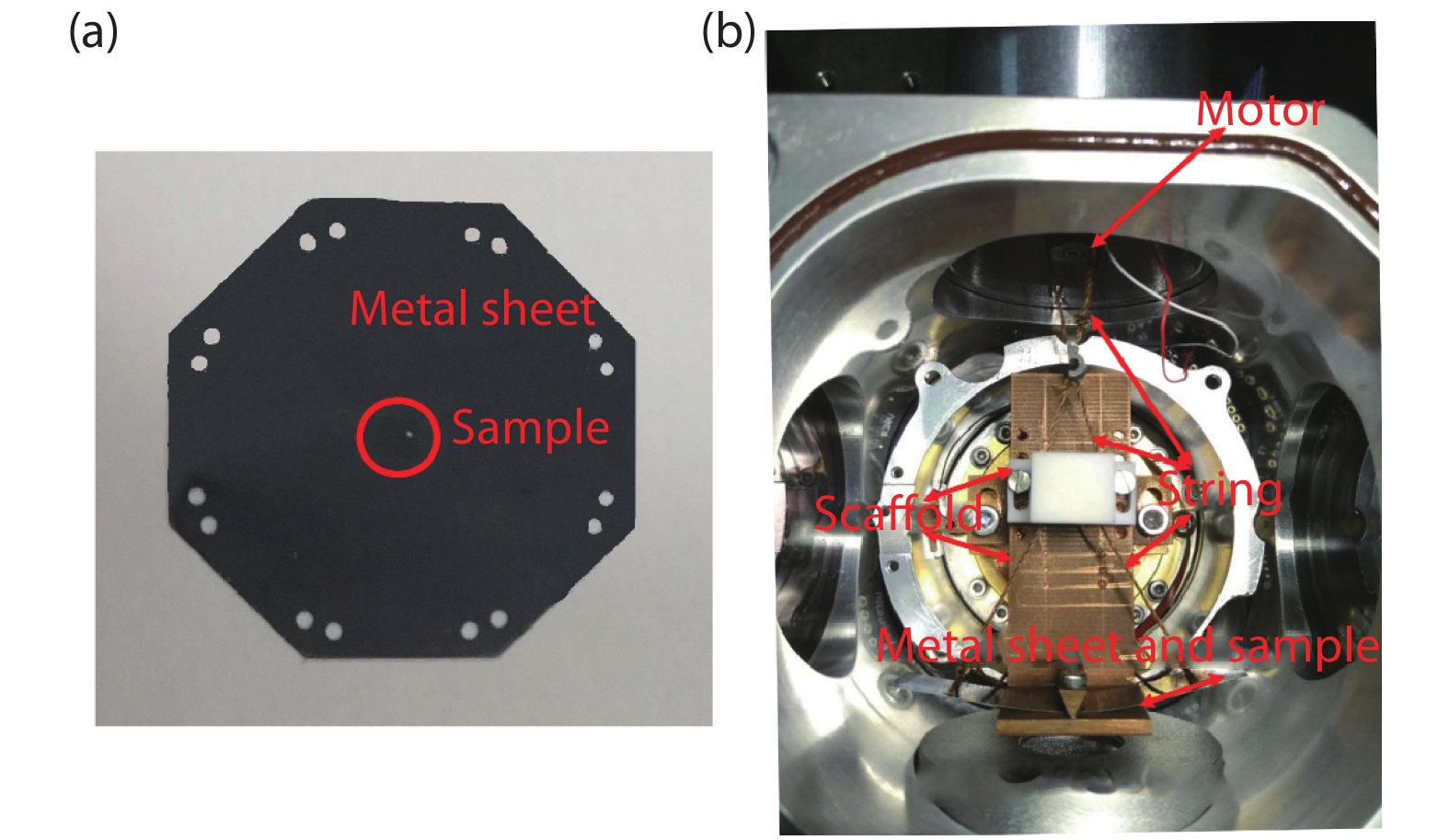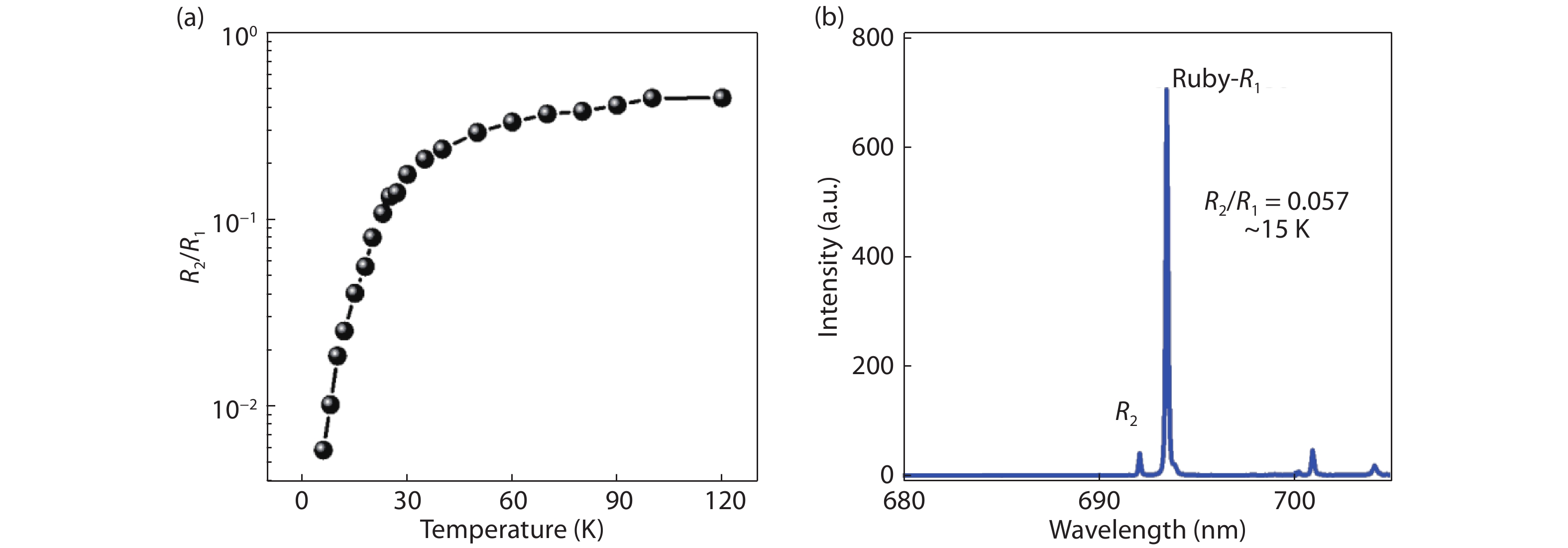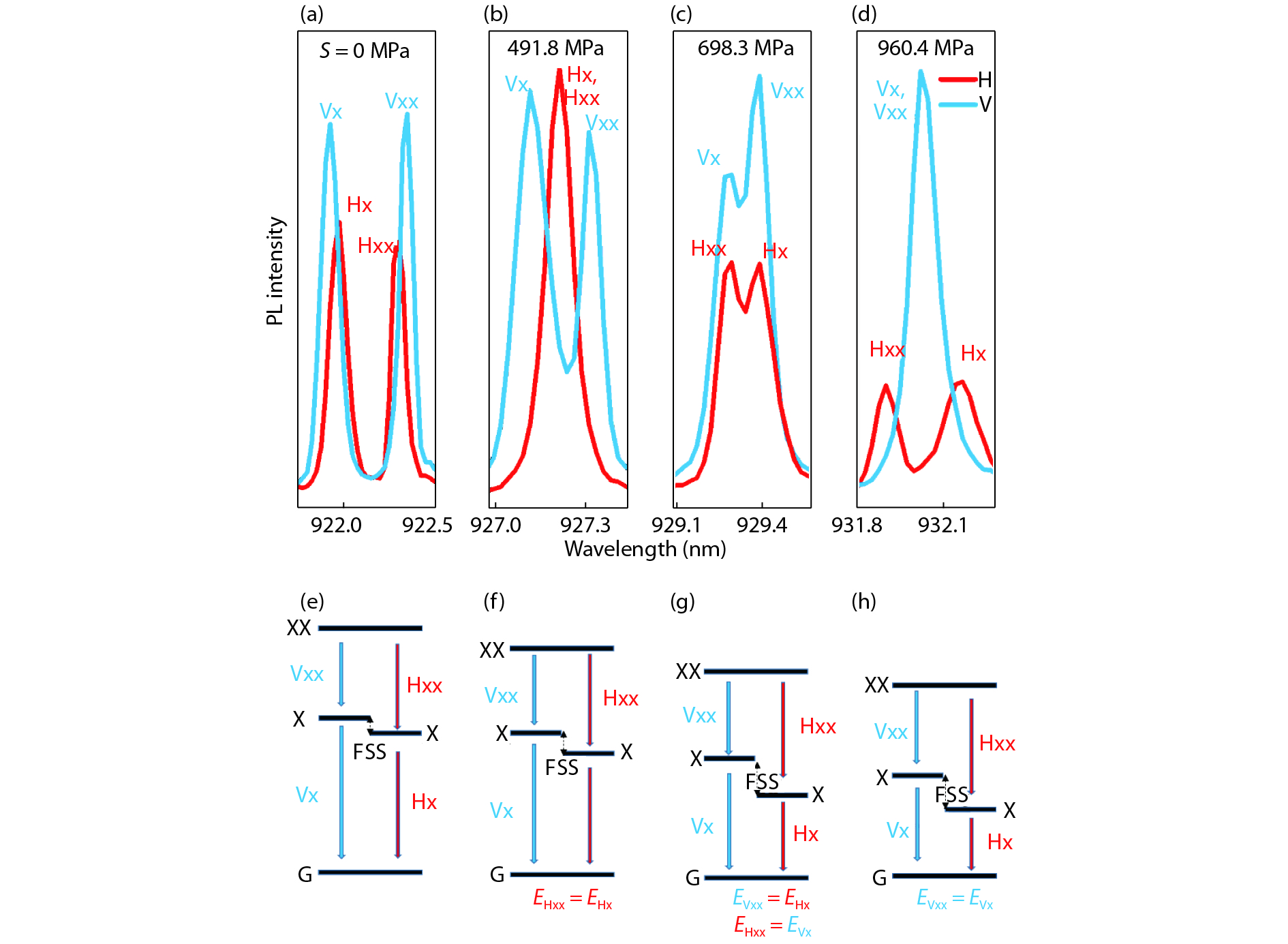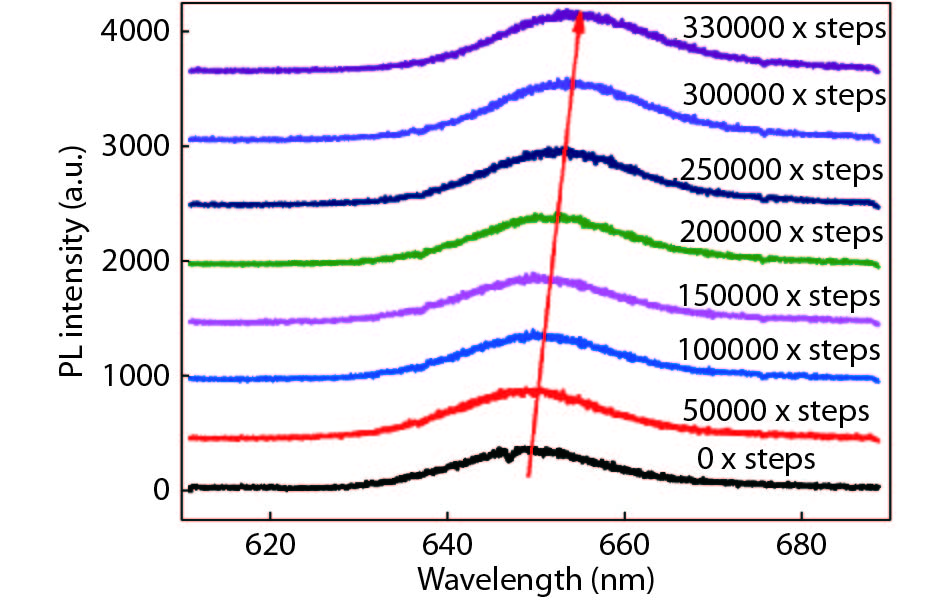| Citation: |
Hao Chen, Xiuming Dou, Kun Ding, Baoquan Sun. Electrically driven uniaxial stress device for tuning in situ semiconductor quantum dot symmetry and exciton emission in cryostat[J]. Journal of Semiconductors, 2019, 40(7): 072901. doi: 10.1088/1674-4926/40/7/072901
****
H Chen, X M Dou, K Ding, B Q Sun, Electrically driven uniaxial stress device for tuning in situ semiconductor quantum dot symmetry and exciton emission in cryostat[J]. J. Semicond., 2019, 40(7): 072901. doi: 10.1088/1674-4926/40/7/072901.
|
Electrically driven uniaxial stress device for tuning in situ semiconductor quantum dot symmetry and exciton emission in cryostat
DOI: 10.1088/1674-4926/40/7/072901
More Information
-
Abstract
Uniaxial stress is a powerful tool for tuning exciton emitting wavelength, polarization, fine-structure splitting (FSS), and the symmetry of quantum dots (QDs). Here, we present a technique for applying uniaxial stress, which enables us in situ to tune exciton optical properties at low temperature down to 15 K with high tuning precision. The design and operation of the device are described in detail. This technique provides a simple and convenient approach to tune QD structural symmetry, exciton energy and biexciton binding energy. It can be utilized for generating entangled and indistinguishable photons. Moreover, this device can be employed for tuning optical properties of thin film materials at low temperature. -
References
[1] Stevenson R M, Hudson A J, Bennett A J, et al. Evolution of entanglement between distinguishable light states. Phys Rev Lett, 2008, 101(17), 170501 doi: 10.1103/PhysRevLett.101.170501[2] Gao W B, Fallahi P, Togan E, et al. Observation of entanglement between a quantum dot spin and a single photon. Nature, 2012, 491(7424), 426 doi: 10.1038/nature11573[3] Lodahl P, Mahmoodian S, Stobbe S. Interfacing single photons and single quantum dots with photonic nanostructures. Rev Mod Phys, 2015, 87, 347 doi: 10.1103/RevModPhys.87.347[4] Aharonovich I, Englund D, Toth M. Solid-state single-photon emitters. Nat Photonics, 2016, 10, 631 doi: 10.1038/nphoton.2016.186[5] Delteil A, Sun Z, Gao W B, et al. Generation of heralded entanglement between distant hole spins. Nat Phys, 2016, 12, 218 doi: 10.1038/nphys3605[6] Senellart P, Solomon G, White A. High-performance semiconductor quantum-dot single-photon sources. Nat Nanotechnol, 2017, 12(11), 1026 doi: 10.1038/nnano.2017.218[7] Wang H, Hu H, Chung T H, et al. On-demand semiconductor source of entangled photons which simultaneously has high fidelity, efficiency, and indistinguishability. Phys Rev Lett, 2019, 122(11), 113602 doi: 10.1103/PhysRevLett.122.113602[8] Plumhof J D, Trotta R, Rastelli A, et al. Experimental methods of post-growth tuning of the excitonic fine structure splitting in semiconductor quantum dots. Nanoscale Res Lett, 2012, 7(1), 336 doi: 10.1186/1556-276X-7-336[9] Bennett A J, Pooley M A, Stevenson R M, et al. Electric-field-induced coherent coupling of the exciton states in a single quantum dot. Nat Phys, 2010, 6(12), 947 doi: 10.1038/nphys1780[10] Ghali M, Ohtani K, Ohno Y, et al. Generation and control of polarization-entangled photons from GaAs island quantum dots by an electric field. Nat Commun, 2012, 3, 661 doi: 10.1038/ncomms1657[11] Trotta R, Zallo E, Ortix C, et al. Universal recovery of the energy-level degeneracy of bright excitons in InGaAs quantum dots without a structure symmetry. Phys Rev Lett, 2012, 109(14), 147401 doi: 10.1103/PhysRevLett.109.147401[12] Wu X F, Wei H, Dou X M, et al. In situ tuning biexciton antibinding-binding transition and fine-structure splitting through hydrostatic pressure in single InGaAs quantum dots. Europhys Lett, 2014, 107(2), 27008 doi: 10.1209/0295-5075/107/27008[13] Wang J, Gong M, Guo G C, et al. Eliminating the fine structure splitting of excitons in self-assembled InAs/GaAs quantum dots via combined stresses. Appl Phys Lett, 2012, 101(6), 2513 doi: 10.1063/1.4745188[14] Dou X, Sun B, Wang B, et al. Photoluminescence energy and fine structure splitting in single quantum dots by uniaxial stress. Chin Phys Lett, 2008, 25(3), 1120 doi: 10.1088/0256-307X/25/3/085[15] Keil R, Zopf M, Chen Y, et al. Solid-state ensemble of highly entangled photon sources at rubidium atomic transitions. Nat Commun, 2017, 8, 15501 doi: 10.1038/ncomms15501[16] Zhang J, Wildmann J S, Ding F, et al. High yield and ultrafast sources of electrically triggered entangled-photon pairs based on strain-tunable quantum dots. Nat Commun, 2015, 6, 10067 doi: 10.1038/ncomms10067[17] Ding F, Singh R, Plumhof J D, et al. Tuning the exciton binding energies in single self-assembled InGaAs/GaAs quantum dots by piezoelectric-induced biaxial stress. Phys Rev Lett, 2010, 104(6), 067405 doi: 10.1103/PhysRevLett.104.067405[18] Desai S B, Seol G, Kang J S, et al. Strain-induced indirect to direct bandgap transition in multi layer WSe2. Nano Lett, 2014, 14(8), 4592 doi: 10.1021/nl501638a[19] Conley H J, Wang B, Ziegler J I, et al. Bandgap engineering of strained monolayer and bilayer MoS2. Nano Lett, 2013, 13(8), 3626 doi: 10.1021/nl4014748[20] Cardona M. Piezo-electroreflectance in Ge, GaAs, and Si. Phys Rev, 1968, 172(3), 816 doi: 10.1103/PhysRev.172.816[21] Seidl S, Kroner M, Högele, Alexander, et al. Effect of uniaxial stress on excitons in a self-assembled quantum dot. Appl Phys Lett, 2006, 88(20), 2513 doi: 10.1063/1.2204843[22] Gong M, Zhang W, Guo G C, et al. exciton polarization, fine-structure splitting, and the asymmetry of quantum dots under uniaxial stress. Phys Rev Lett, 2011, 106(22), 227401 doi: 10.1103/PhysRevLett.106.227401[23] Xiong W, Xu X, Luo J W, et al. fundamental intrinsic lifetimes in semiconductor self-assembled quantum dots. Phys Rev Appl, 2018, 10(4), 044009 doi: 10.1103/PhysRevApplied.10.044009[24] Troiani F, Tejedor C. Entangled photon pairs from a quantum-dot cascade decay: The effect of time reordering. Phys Rev B, 2008, 78(15), 155305 doi: 10.1103/PhysRevB.78.155305 -
Proportional views






 DownLoad:
DownLoad:




















